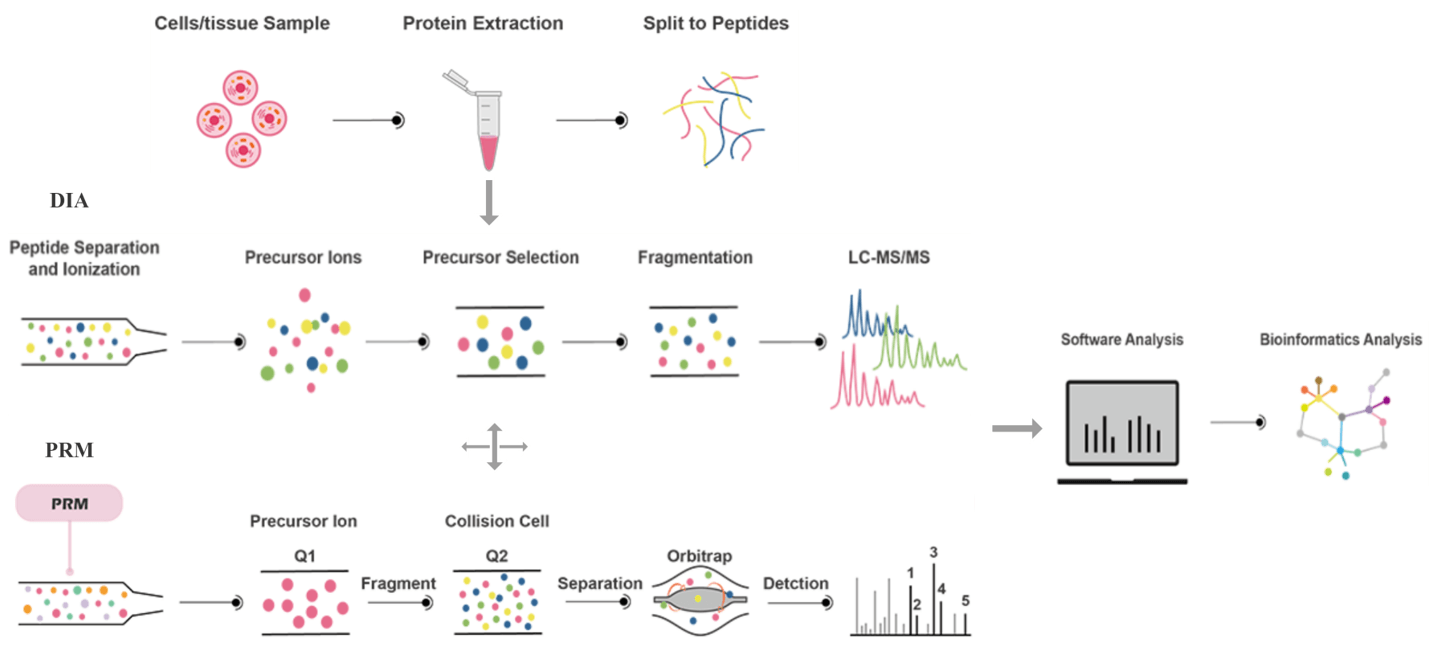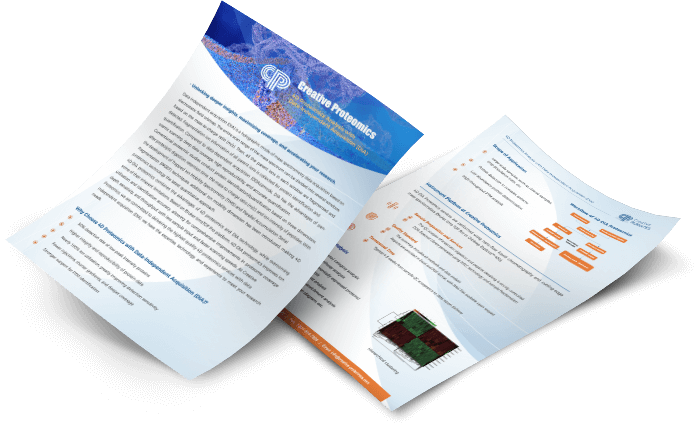DIA+PRM Target Proteomics Services
Today, isotope labeling quantitation (iTRAQ/TMT) is the most widely used technique in proteomics research. However, this acquisition method ignores certain peptide information and has throughput limitations for large samples.
For data validation, conventional methods include PCR, RT-PCR, western blot, Elisa, etc. However, validation at the RNA level certainly cannot meet the requirements of researchers. Although WB and Elisa technologies could not be applied to non-model species due to antibody customization difficulties, DIA (data independent acquisition) + PRM (Parallel Reaction Monitoring) can solve these problems with proteomics.
Principle of DIA+PRM
DIA: First, a spectra library is established using conventional DDA (data dependent acquisition) mass spectrometry analysis. Then the DIA method is used for mass spectrometry data acquisition, which enables the characterization and quantification of proteins in samples. Unlike conventional DDA technique, the DIA technique divides the entire scan range of mass spectrometry into several windows to select, fragmental and detect ions in each window in a high-speed and cyclic manner, so to obtain all fragmentation information in the sample. Moreover, data utilization is improved significantly with fewer missing values. Therefore, the DIA technique is more suitable for protein detection in large sample volumes and complex systems.
PRM: Parallel Reaction Monitoring is a high-resolution and high-precision mass spectrometry-based ion monitoring technique that enables selective detection of target proteins and target peptides (e.g., post-translational modified peptides), giving the target proteins/peptides relative or absolute quantification. PRM technology is a mass spectrometry-based targeted verification proteomics technology, and it is the replacement of antibody-based WB, ELISA, etc. PRM technology specifically selects and quantifies peptide ions with the same pre-set mass-to-charge ratio to effectively eliminate interfering ions and improve quantitative accuracy.
Features
In comparison to traditional iTRAQ/TMT/Label-free proteomics technology, DIA technology has the following advantages:
(1) Good reproducibility: all ion and fragmentation spectra are collected (no loss);
(2) Good selectivity: quantification based on fragment ions, which is equivalent to SRM/MRM;
(3) High quantitative accuracy;
(4) High throughput: simultaneous monitoring of all target proteins/compounds;
(5) High timeliness: data can be collected immediately for easily degradable samples;
(6) Easy to trace data: even if some proteins/compounds cannot be detected at current level, they can be retrieved later.
In comparison to Western blot, ELISA, and other targeted protein verification technologies, PRM technology has the following advantages:
(1) No antibody is required, and target protein in sample can be directly quantitatively analyzed;
(2) High specificity, accuracy and sensitivity, multiple unique peptides correspond to target protein;
(3) High throughput and larger quantitative detection of proteins can be achieved simultaneously.
Our DIA+PRM Target Proteomics Services
Using advanced high-resolution mass spectrometers Thermo Orbitrap HF and Fusion series, Creative Proteomics can provide you with cutting-edge protein DIA detection and PRM targeting protein validation services. We can easily detect hundreds of samples with professional software (Open SWATH and Skyline) and realize spectral library generation, quality control, and DIA and PRM data analysis to provide highly accurate results.
Workflow

Sample Requirements
Animal and clinical tissue specimens: 100 mg/sample
Serum, plasma: 200 μL/sample
Cells, microorganisms: 1×107 cells/sample
Report
- Experimental steps
- Relevant experiment parameters
- Mass spectrometry spectra
- Raw data
- Proteomics analysis results
References:
- Su F, Zhou FF, Zhang T, et al. Quantitative proteomics identified 3 oxidative phosphorylation genes with clinical prognostic significance in gastric cancer[J]. J Cell Mol Med. 2020;00:1–13.
- El-Khoury V, Schritz A , Kim S Y , et al. Identification of a Blood-Based Protein Biomarker Panel for Lung Cancer Detection[J]. Cancers, 2020, 12(6):1629.


 4D Proteomics with Data-Independent Acquisition (DIA)
4D Proteomics with Data-Independent Acquisition (DIA)